Traditional restaurant service used to begin with a customer ordering his or her meal from items listed on a menu. The restaurant controlled the selection and portion sizes in order to maximize the profit from each plate served. With the advent of buffet meals, however, many restaurants can serve a larger number of customers with a minimum level of staffing, thus improving their profit margins through volume sales.
A buffet is generally a self-service form of dining in which the customer pays a fixed price and is entitled to select as much food as he or she wishes. The wait staff in a buffet restaurant may still refill beverages and remove plates, but there is no menu as such. Cooks prepare food in bulk, and runners replenish the selection of food as necessary.
A buffet arrangement could consist of one long serving line with both cold and hot items, or a collection of smaller stations dedicated to a particular part of the meal, such as cold salads, meats, vegetables or desserts. A buffet may be completely self-serve, with appropriate serving tools such as slotted spoons or tongs, or there may be workers assigned to carve meats or prepare made-to-order dishes, such as egg omelets.
The concept of an all-you-can-eat buffet arrangement is often credited to the Swedish tradition of a smorgasbord, but the modern buffet philosophy is a bit different than the Swedish tradition. A smorgasbord, which literally translates to “sandwich table,” was designed to allow guests an opportunity to sample small portions of food. A true smorgasbord starts with cold fish-based appetizers and works its way through sandwiches, meat dishes and finally a dessert. A modern buffet may offer cold salads, hot meats and desserts, but the diner can decide the order and amount of food to consume.
The first modern buffet-style restaurant most likely started in the earliest casinos operated in Las Vegas, Nevada. Casino owners wanted to find a way to provide their customers with the maximum amount of food with the least amount of staffing. A buffet appeared to be the ideal solution, since it kept gamblers inside the building and provided another attraction for those who passed by the casinos. Even today, Las Vegas casinos are nearly as well-known for their elaborate buffet arrangements as they are for gambling or musical entertainment. Many cruise ships have also embraced the idea as a way to serve a large number of guests at one time.
A buffet restaurant does indeed lose some money on overindulgent diners and expensive cuts of meat and seafood. This is considered to be an acceptable loss, since other diners may not eat nearly as much food or select the most expensive items. A buffet restaurant obtains much of its food from a wholesaler or middleman who can buy food in bulk at a substantial discount. The price of the meal generally helps the restaurant recoup most of its raw food expenses, but volume helps pay for the staffing and other costs.
Buffet-style dining has become very popular, especially when combined with a menu service in ethnic restaurants or steakhouses. Diners can control their own portion sizes and side dishes, even if they decide not to overindulge. This ability to self-select entrees and side dishes also makes a buffet dining arrangement ideal for occasions such as wedding receptions and holiday parties.

